Table of Contents
The management and treatment of type 2 diabetes heavily relies on diet modification. Carbs and food is a major contributor to the increase in blood glucose levels. To manage diabetes; it is important to combine diet modification with regular exercise, weight loss, and lifestyle changes like quitting smoking and regulating alcohol intake.
What Carbs Are Recommended?
Carbohydrates are the primary food type that raises blood sugar/has the most marked effect on it. As such, it is paramount that you pay a lot of attention to the carbs; that you consume and be very careful not to eat the wrong type of carbs.
What is Glycemic Index (GI)?
Glycemic index refers to how fast a serving of a particular food raises the blood sugar level; as compared to glucose and white bread. Foods are considered to be very low, low, medium, or high in GI. Foods with low GI are those that cause minimal rise in blood sugar within 2 hours after eating. High GI foods are those that give the greatest increase in blood sugar levels. High fiber foods with complex carbohydrates have a low GI. Examples are bread, cereals and rice that are whole-grain. However, just because foods have a low GI doesn’t mean that they are healthy. GI refers only to the carbohydrate content. Protein and fats do not contain carbohydrates, hence are low GI foods. Eating a lot of these can also be harmful to health. Maintain balance in the calories and portion control of all foods.
Most very low GI foods are vegetables that are dark green and leafy. Fruits range from low to medium GI. Nuts and seeds range from very low GI (flaxseeds and sesame seeds) to low GI (cashew, almonds, peanuts, walnuts). Soybeans and tofu are very low GI foods. Other types of beans are low GI foods. Protein-rich foods are all very low GI because they do not contain carbohydrates. However, eat in moderation because they can harm the body if taken in huge amounts. Dairy products are low GI foods.
Glycemic load and glycemic index are terms; that are used to calibrate the impact that a carbohydrate has on blood sugar. As such:
- Foods that have a low glycemic load/index have the effect of only raising blood sugar modestly, and are for this reason, a superior choice for Type 2 Diabetes patients
- In general, the main factors that have the biggest effect on a meal’s glycemic load are carbs, fiber, fat and protein amount present. This is especially the case when you are dealing with simple carbs, as opposed to complex carbs – if the carb amount is high, the glycemic load will be high.
Carbohydrates can be classified as either:
- Complex carbs
- Simple sugars
Complex Carbs
Complex carbs are the carbs you should primarily focus on; since they are low glycemic load carbs that are in their ‘whole food’ form, or otherwise unprocessed, and are inclusive of additional nutrients such as vitamins, fiber and small amounts of fats and proteins. They come whole, and no ‘separations’ or ‘extractions’ – all factors of industrial processing.
Complex carbs are recommended for the diabetes patient’s meal plan; as they are not disruptive to blood sugar levels as simple carbs are. Examples of complex carbs that you should have in your meal plan are:
- Whole wheat
- Brown rice
- Quinoa
- Vegetables
- Steel-cut oatmeal
- Beans
- Fruits
- Lentils
Grains and starchy vegetables
Whole grains such as oatmeal, quinoa and brown rice are great sources of nutrients and fiber. They have a low glycemic load, and this makes them great food choices. Ensure that you have these in your diet.
Starchy vegetables are loaded with such nutrients as Vitamin C and have significantly higher carb content than green vegetables. They are also lower in carbohydrates than refined grains. You can eat these in moderation. These starchy vegetables include –
- Potatoes
- Squash corn
- Other root vegetables like yams
- Corn
Try to eat these in smaller portions of one cup; preferably as part of a combination meal, that is inclusive of plant-based fats and protein.
Non-starchy vegetables
We are talking about green vegetables. Feel free to eat these in abundance – they will not spike your blood sugar levels even if you gorge on them. What is more, they have a low caloric content; which means you can eat lots of them without worrying about piling on body fat.
Eating fresh green vegetables is your best option. However, if this is difficult, ensure that there are no sweeteners added. If you do not like them on their own, prepare them with fresh/dried herbs, a vinaigrette dressing or olive oil.
Simple Sugars/Carbohydrates
These are high glycemic load foods that you should try to avoid. They raise blood sugar levels easily, and they lack the extra nutrients that usefully impede sugar absorption.
- Sugar
- White bread
- White pasta
- Cookies
- Pastries
- Flour
- White potatoes
- Cereals
- Fruit juice
- Pineapples
- Soft drinks
Fats
Fats have little direct effect on your blood sugar. But they are very useful; when taken as part of a meal, in slowing down carb absorption and keeping blood sugar levels low.
So, what fats should you focus on? Plant-based fats are best. Not only do they reduce sugar absorption, but they have been shown to lower the risk of cardiovascular disease.
Think of such fats as:
- Avocado
- Olive oil
- Nuts
- Seeds
It is important to mention that fats also come with health effects that are not necessarily related to blood sugar. For instance:
- Animal meat fats have been known to increase the risk of cardiovascular disease. However, dairy, and specifically fermented dairy products like yoghurt, have been seen to decrease this risk.
- Plant-based fats such as nuts, olive oil, avocado and varied seeds have been shown to lower the risk of cardiovascular disease. This is one of the reasons why; as a person who stands a significantly higher chance of contracting cardiovascular disease due to diabetes; you should focus on plant-based fats and avoid animal-based ones.
- Fats give you a satiated feeling that will play a significant role in combating overeating; and carb cravings that come with diabetes. It is true that a portion of healthy fats; with the example of an avocado portion on wholegrain toast, is considerably more satisfying and healthier than jam on white toast.
Protein
The thing with protein is that it effectively provides slow, steady energy; and with almost no effect on your blood sugar. This is why meal plans for people suffering from Type 2 Diabetes are recommended to have a higher than usual ratio of protein to carbs.
The key thing to do is to source the bulk of your protein from plants; plant-sourced protein should be a staple in your diet. In fact, it is smart to sneak plant-sourced protein even into your snacks.
Not only does protein consumption ensure that your blood sugar remains stable; it helps greatly in staving off the sugar cravings that haunt diabetics with so much intensity; and it helps you maintain the feeling of satiety for longer periods. While the conventional world places most protein-popularity on animal-based proteins, the problem here is they often come with unhealthy saturated fats.
Here are some good protein sources:
- Legumes
- Beans
- Fish and seafood
- Eggs
- Peas
- Organic dairy
- Soy foods and tofu
- Lean meats such as turkey and chicken
It will be a smart thing to pay proper attention to the macronutrient balance in your meal plan (carbs, protein and fats). You need to do this to ensure your blood sugar levels remain stable. Regarding protein, you need to ensure that you have a proper serving in every meal. In addition to such great effects as keeping you satiated and keeping your blood sugar levels relatively undisturbed, protein, just like fats; significantly slow down sugar absorption. This helps your body have enough time for slower, lower release of insulin; as well as a steadier transportation of sugar throughout the blood and into the necessary tissues.
Diabetes Superfoods
You may have already heard of super foods; but do you really know what they are? Super foods are foods that have the capacity to benefit your health, beyond the mere provision of calories and fats, carbohydrates; or protein. Super foods are often rich in an assorted array of vitamins, as well as other nutrients that are beneficial for diabetic patients.
Here are the top five super foods; it will help you a great deal to include them in your meals as often as possible:
- Chia Seeds
Chia seeds are rich in fiber, omega-3 fatty acids and protein. With regards to Type 2 Diabetes; chia seed is a super food in that it is very effective in bringing down the glycemic load of any meal, while increasing the feeling of satiety and stabilizing your blood sugar.
One way you can properly incorporate chia seeds into your meal plan is by adding a serving of these seeds to your breakfast; having chia seeds as part of your breakfast will keep you feeling fuller for longer. You can mix them with cocoa, almond milk or low glycemic load sweeteners like stevia.
- Wild Salmon
Why is salmon referred to as a super food for diabetes patients? It is because salmon is a phenomenal source of omega-3 fatty acids, which have great anti-inflammatory qualities. While inflammation is a very vital function of the body, it has been proven to cause, and even elevate insulin resistance, as well as lead to diabetes complications such as neuropathy, which is nerve damage; and nephropathy, which is kidney damage. Diabetes can cause damage to blood vessels, which could lead to damage throughout the body. But how is diabetes able to achieve this? High levels of blood sugar trigger inflammation, and this inflammation is what damages your blood cells.
It is important to point out that wild salmon and farm salmon are quite different; there are differences in the fatty acids package in both wild and farmed salmon. Wild salmon must survive in colder water, while feeding on smaller fish, as opposed to the processed fish food that farmed salmon eat. This combination enables them to have a greater amount of omega-3s to saturated fats to farm salmon. In addition, farmed fish have up to 10 times the amount of antibiotics, pollutants and other contaminants, all of which are pro-inflammatory.
- White Balsamic Vinegar
The best way to have this is as a vinaigrette dressing on, say, salad. However, whichever way you choose to take it (there are some who confess to adding flavor to their pancakes by frying them with vinegar, as opposed to using oil), you will enjoy its multiple health effects.
Vinegar usually slows down gastric emptying, slowing the release of glucose into your bloodstream, and thus allowing for a small and steady response of insulin, as opposed to large surges of the same. With large surges of insulin being released, your body’s chances of responding with insulin resistance is high. Once this happens, there is considerable strain on your pancreas to produce even more insulin, now that your body is resistant to it and getting in the way of its glucose-transportation job. The body’s response will be to have the pancreas produce and release even more insulin, because glucose is not being transported sufficiently to the body cells. This affects the pancreas, as it gets worn out and sub-functional after a while, and the huge loads of insulin being released only compel the body to put up resistance to it.
White balsamic vinegar also increases your feeling of satiety, meaning that you are less likely to overeat.
- Cinnamon
Cinnamon works to lower serum glucose in Type 2 Diabetes patients. It is common for glucose levels in the blood to rise to abnormally high levels, which, as this book has highlighted at so many points, is detrimental for you as the ultimate result is a build-up of insulin resistance. Cinnamon gets in the way of glucose absorption and regulates its levels in the blood. Health care professionals have determined that a mere teaspoon a day will ensure you enjoy multiple health benefits.
For example, cinnamon lowers postprandial blood sugar levels (after-meal blood sugar levels). After meals, it is common for blood sugar levels to rise to levels higher than was the case before having the meal. Cinnamon undercuts this by impeding the absorption of glucose into the bloodstream, allowing for regulation of blood sugar levels.
It is quite easy to add to any meal plan – you can sprinkle it on your oatmeal or add it to coffee.
- Lentils
They qualify as a super food, as they come with various important vitamins, have a good amount of protein and have lots of fiber. Proteins, in addition to having little to no effect on your blood sugar, have the satiating quality that will help you feel fuller for longer and as a result help in fighting the hunger pangs that so often, and fiercely, haunt diabetes patients. Fiber usefully impedes absorption of carbohydrates, which has a positive effect on blood sugar levels as it helps keep them low.
Lentils also have a good amount of minerals and vitamins such as iron and B vitamins like folate. Lentils also have a great complex carb-protein balance and they are quite versatile to cook with.
Remember, complex carbs are your healthy carbs, which, unlike simple carbs, do not have detrimental effects on your blood sugar. And with the protein content in lentils being so prevalent, you will stay satiated for longer, which will ensure you do not have the usual hunger pangs and sugar cravings.
Here is some info regarding cooking lentils:
- Brown and green lentils are delicious in a salad, and they remain firm even when cooked.
- The orange lentils do get soft after cooking, and this quality makes them a great option for curries.
Foods To Avoid
A great point to start at as a Type 2 Diabetes patient, is avoiding most of the same foods that everybody else should limit. You could do this alone, without having to explore the subject deeper, and you would be fine. Take processed carbs for instance; they are a no-no for diabetes patients, and everybody else is discouraged from eating them as well.
But let us get into specifics: here are some foods you shouldn’t eat
- Sodas: Stay away from all kinds; both diet soda and sugar sweetened regular soda have a significant effect on blood sugar levels. Soda has simple sugars, which have a high glycemic load, meaning that soda ultimately has a high impact on your blood sugar levels, elevating them significantly.
- Refined sugars: We are talking cookies, pastries, cakes, scones, candy, sweets and the like. These contain simple sugars, which have a high glycemic load, meaning that they have a high effect on your blood sugar levels.
- Processed carbohydrates: We have already covered this in some depth. Think about pasta, saltines, white bread… even chips. They mess up your blood sugar levels, and while they fill you up very quickly, the feeling of satiety does not last long, if at all. Within a short while you will feel hungry and have sugar cravings, causing you to eat more. This will present a problem as not only will sugar levels in your blood rise too high, it will be hard to control your weight as you will most likely overeat.
- Trans-fats: Basically, we are talking about anything with a ‘hydrogenated’ tag on the label. It is going to be difficult to give up your mayonnaise spreads, butter spreads, most packaged sauces, bakery foodstuff and some salad dressings, but this will only work in your favor. This is because they have simple sugars, which ultimately shoot your blood sugar levels up and make it easier for your body to develop insulin resistance and ultimately wear out your pancreas, as well as lead to such complications as nerve, eye and kidney damage.
- Animal products that are high-fat in nature: It does not take too much thinking to tell what we are talking about here; fatty pork cuts, red meats, sausages and bacon. These products come with saturated fats that contain cholesterol. Of course, since maintaining a healthy BMI is vital, it is important to avoid saturated fats and cholesterol, which makes it difficult to lose weight, and may increase the risk of cardiovascular disease.
- Dairy products that are high-fat: Think of such products as ice cream, cheese, cream and whole milk. Again, you want to avoid cholesterol input in your body, which could complicate your efforts of diabetes management, as cholesterol makes it easier to gain weight. Ice cream also comes with sweeteners, which raise your blood sugar levels. However, yoghurt is actually good for you, and has been shown to decrease the risk of cardiovascular disease.
- Corn syrup with high sugar levels: This is often present in many sodas, packaged convenience foods and candy. You want to avoid the simple sugars in these foods as they have a massive impact on your blood sugar levels, and their processed nature means that they lack extra fiber to get in the way of sugar absorption in your blood. As such, blood sugar levels get very high, very quickly.
- Artificial sweeteners: One great way to tell foods that have artificial sweeteners and which ones do not, without having to conduct an intensive investigation, is to check food labels for the ‘diet’ tag. All processed foods that are ‘diet foods’, going by their labels, will almost always have artificial sweeteners in them. Sweeteners mean simple sugars, which mean elevated blood sugar levels, as simple sugars have a high glycemic load/index.
- Highly processed foods: Think about foods such as kettle corn, cookies, candies, chips and sweets. These foods typically impact blood sugar levels heavily, as they contain high amounts of simple sugars and very low amounts of such foods as proteins, fiber, and healthy fats; and will only provide temporary satiety.
Perhaps the best way to properly avoid all these foods is to only shop around the grocery store edges, and as much as you can, minimize the amount of packaged foods.
Perhaps the simplest, most direct, most beneficial Type 2 Diabetes diet advice is, at the very most, only minimally processed food is your best bet.
One question many diabetes patients ask is if they can drink alcohol. The advice here is to consume alcohol moderately. A drink or two a day is healthy, aids in digestion, and such a moderate intake really has no negative effects on diabetes. Actually, alcohol can make blood sugar levels decrease. If you have Type 2 Diabetes and are hypoglycemia-prone; and most people on insulin therapy suffer this condition, understand that alcohol intake can cause delayed hypoglycemia. In this way alcohol is your friend, and it may help to eat your food with a little alcohol.

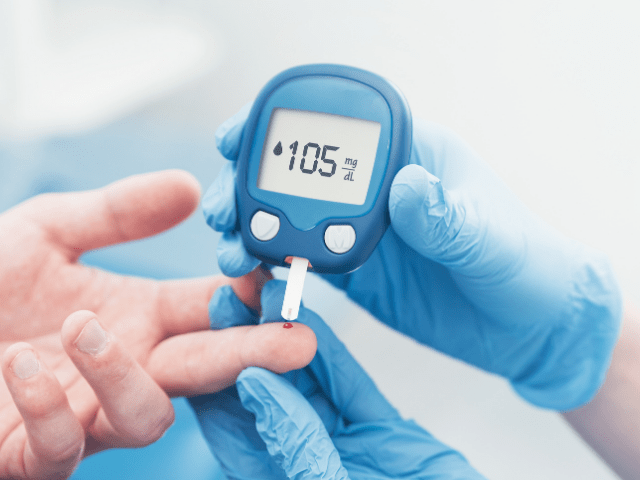
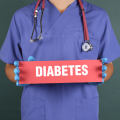
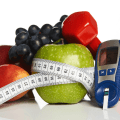
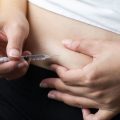
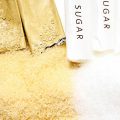
 I love to write medical education books. My books are written for everyone in an easy to read and understandable style.
I love to write medical education books. My books are written for everyone in an easy to read and understandable style.